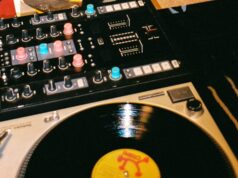 A new invention makes it possible to transfer wireless data over lightwaves, theoretically enabling household light bulbs, streetlights or even car headlights to beam communications and information as they illuminate.
A new invention makes it possible to transfer wireless data over lightwaves, theoretically enabling household light bulbs, streetlights or even car headlights to beam communications and information as they illuminate.
The project is the work of Harald Haas, a professor and chair of Mobile Communications at the University of Edinburgh. He gave a live demonstration at TEDGlobal using a chip in an LED bulb. By flickering the light more quickly than the human eye can detect, he can transmit far more data than a cellular tower — and do it in a way that’s more efficient, secure and widespread.
“It should be so cheap that it’s everywhere. Using the visible light spectrum, which comes for free, you can piggy-back existing wireless services on the back of lighting equipment,” Haas said in a statement. “As well as revolutionizing Internet reception, it would put an end to the potentially harmful electromagnetic pollution emitted by wireless internet routers and has raised the prospect of ubiquitous wireless access, transmitted through streetlights.”
Although it’s not ready for commercial rollout yet, the system has gone far enough to attract Proof of Concept funding from Scottish Enterprise.
Haas calls the system D-Light, which is much friendlier than its technical name subcarrier-index modulation orthogonal frequency division multiplexing (SIMOFDM). Haas is reporting data rates of up to 10 MBit/s per second (faster than a typical broadband connection), with 100 MBit/s achievable by the end of this year.
The D-Light project is based at the University of Edinburgh’s Institute for Digital Communications and the aim is to create a spin-out company (VLC Ltd.) based on the unique technology being developed.
Related Links:
Harald Haas’ professional website – http://tinyurl.com/3kv4eb2
TED Talks – http://tinyurl.com/3rcf5z5
Photo of Sarah McCune by flickr user Casey David, used under Creative Commons license.







